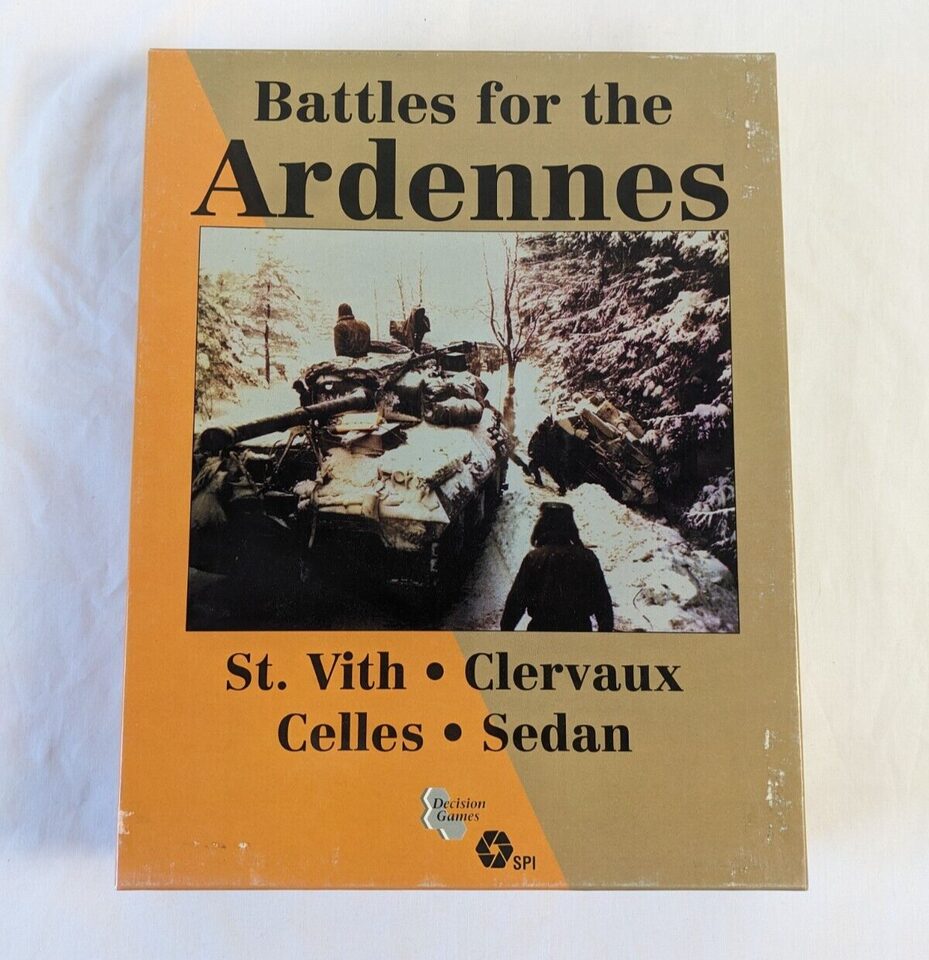Battles for the Ardennes (1978)
Battles for the Ardennes
Battles for the Ardennes is a “quadrigame”
– a board wargame that contains four different battles using one set of rules
– originally published by Simulations Publications, Inc. (SPI) in 1978 that simulates Second World War battles in the Ardennes Forest region in 1940 and again in 1944.
Why is Battles for the Ardennes Popular?
Battles for the Ardennes is significant because it was one of the first board wargames to include one set of rules to be used with four different battles. Having four battles in one box was seen as good value for the money, and SPI published several more “quadrigames” over the next seven years. The game is popular among wargamers because of its historical accuracy and the challenge it presents.
Game Components of Battles for the Ardennes
How To Setup Battles for the Ardennes
Setup involves preparing the game boards, which comprehensively detail the terrain of the Ardennes, and organizing the counters and maps according to the specific scenario being played. Each scenario has its own setup instructions outlined in the Scenario rule book. Players need to place the counters on the map as specified, ensuring that the historical accuracy of the units and their positions is maintained.
Gameplay Mechanics and Game Objective
Player Experience
Players of **Battles for the Ardennes** are immersed in detailed and historically accurate simulations of World War II battles. The game offers a mix of simplicity in rules and complexity in strategy, making it appealing to both beginners and experienced wargamers. The various scenarios provide a high degree of replayability, and the secret Victory Plans in the 1944-1945 campaign game add an element of unpredictability and strategic depth.
Pros
Cons
Personal Thoughts on Battles for the Ardennes
**Battles for the Ardennes** is ideal for wargamers who appreciate historical accuracy and strategic depth. It is particularly suited for those interested in World War II and the specific battles of the Ardennes region. While it may not introduce groundbreaking mechanics, its combination of simplicity in rules and complexity in strategy makes it a stimulating package for both beginners and seasoned players. The game’s high replayability and varied scenarios ensure that it remains engaging over multiple plays.
We are supported by our audience. When you purchase through links on our site, we may earn an affiliate commission, at no extra cost for you. Learn more.

